The fashion industry’s fast fashion phenomenon has had severe environmental, social, and health implications. Companies have been producing clothes at a lower cost by finding cheaper ways to produce garments, resulting in severe environmental damage and depletion of resources, hazardous working conditions, and harm to workers’ health. The trend towards fast fashion has led to a throwaway culture, where clothes are worn only a few times before being discarded, causing enormous waste of resources and pollution. To build a more sustainable fashion industry, it is essential to adopt a more sustainable approach to clothing consumption, support sustainable production processes, and shift consumer behavior and industry practices. Consumers can make a difference by buying second-hand clothes, investing in higher-quality, longer-lasting items, repairing or repurposing old garments, and supporting companies that prioritize sustainability in their production processes. The fashion industry can also adopt more sustainable practices like using recycled materials or implementing closed-loop production systems. Building awareness, willingness to change, and making conscious choices can help mitigate the environmental impacts of the fashion industry, reduce water pollution caused by textile production, and work towards a cleaner and healthier environment for all.
In today’s world, the fast fashion industry is under increasing scrutiny due to its negative impacts on the environment and people involved in the supply chain. Many organizations and initiatives have emerged to challenge the industry to become more sustainable and ethical, and to demand transparency and accountability from brands. This article explores some of these initiatives, including the Fashion Revolution movement, Greenpeace’s Detox campaign, the Clean Clothes Campaign, the Zero Discharge of Hazardous Chemicals (ZDHC) Foundation, the documentary The True Cost, the Global Organic Textile Standard (GOTS), and the Fair Wear Foundation. Each of these organizations plays a vital role in improving the fashion industry’s practices and promoting sustainability and fairness. Through their efforts, they are shaping a future where fashion is not only beautiful but also responsible and just.
Why Fast Fashion is Harming Our Environment and Hiding in Our Closets
Over the past two decades, the cost of producing clothing has been driven down, resulting in an increase in the quantity of clothes we buy. However, the implications of this fast fashion phenomenon are alarming. To keep prices low, companies are forced to find cheaper ways to produce their garments, often at the expense of the environment and the workers who produce them. The mass production of clothing consumes vast quantities of natural resources, and the chemicals used in manufacturing pollute the air, water, and soil. This has resulted in the depletion of resources and severe environmental damage. Furthermore, workers in the garment industry often work long hours in hazardous conditions, with little or no job security, and for minimal pay. The negative impact of the fast fashion industry extends beyond the environment and workers to our own health. Many fast fashion brands use synthetic materials that contain harmful chemicals which can cause skin irritation and allergic reactions.

Despite these issues, the trend towards fast fashion continues to grow. Companies are constantly releasing new collections and tempting consumers with the latest styles at incredibly low prices. This has led to a throwaway culture, where clothes are worn only a few times before being discarded. In fact, it is estimated that the average American throws away 70 pounds of clothing every year. This not only results in an enormous waste of resources but also contributes to the pollution of our planet. However, the good news is that there are steps we can take to address these issues and build a more sustainable fashion industry.
One way to address the negative impacts of fast fashion is to adopt a more sustainable approach to clothing consumption. This can involve buying second-hand clothes, repairing or repurposing old garments, or investing in higher-quality, longer-lasting items. Another key step is to support companies that prioritize sustainability in their production processes, such as those that use organic materials or prioritize fair labor practices. Ultimately, building a more sustainable fashion industry will require a shift in both consumer behavior and industry practices, but the benefits to our planet, our health, and the lives of garment workers are well worth the effort.

The rise of fast fashion has had a profound impact on the way we think about clothing. Rather than viewing garments as long-term investments, we now see them as disposable items that can be worn only a handful of times before being discarded. This has led to an unsustainable culture of overconsumption, where we feel compelled to constantly update our wardrobes to keep up with the latest trends. Unfortunately, this approach to fashion has significant environmental and social costs.
One of the main reasons why we are unable to wear our clothes more than five times is that garment quality has declined in recent years. This is a direct result of the fast fashion business model, which prioritizes quantity over quality. As a result, clothes are often made from cheap, synthetic materials that are not designed to last. After a few washes, they can start to look faded, shapeless, or worn out. This has led to a cycle of constant consumption, where we are forced to buy new clothes simply to replace those that have worn out prematurely.
Another factor driving our fast fashion addiction is the constant churn of trends. With new collections hitting stores every few weeks, it’s impossible to keep up with the latest styles without constantly buying more clothes. This approach to fashion not only puts pressure on our wallets but also on the planet. The fast fashion industry is a major contributor to pollution, waste, and greenhouse gas emissions, which are having a devastating impact on the environment.
So, what can we do to break free from the fast fashion cycle? In the next section, we’ll explore some alternatives that can help us reduce our impact on the planet and build a more sustainable fashion industry.
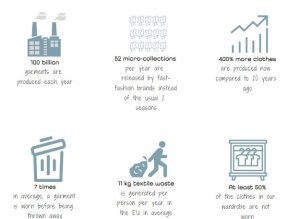
The fast fashion industry’s impact on the environment is staggering. It is estimated that the fashion industry is responsible for 10% of global carbon emissions, and is the second largest consumer of the world’s water supply. In addition, the production of synthetic fabrics like polyester and nylon releases microplastics into the water supply and takes hundreds of years to decompose. The fashion industry also generates massive amounts of waste, with over 92 million tons of textile waste being produced each year.
Despite these concerning statistics, there are solutions and alternatives available to mitigate the environmental impacts of the fashion industry. One of the most important steps we can take is building awareness and willingness to change. Consumers can make a difference by choosing to support companies that prioritize sustainability in their production processes, or by adopting more sustainable habits like buying second-hand clothes or repairing old garments. The industry can also make significant changes by adopting more sustainable practices like using recycled materials or implementing closed-loop production systems. By working together and making conscious choices, we can create a more sustainable future for fashion.
In addition to the air pollution and carbon emissions that the fashion industry generates, the water pollution caused by textile production is also a major concern. In many countries where garments are produced, untreated wastewater containing toxic chemicals is dumped directly into rivers, contaminating water supplies and harming both aquatic life and humans. Fertilizers used in cotton production also contribute to water pollution, as they often contain harmful chemicals that can runoff into nearby bodies of water.
To combat these issues, consumers can make a difference by choosing to support companies that prioritize sustainable and environmentally-friendly production practices. This includes selecting clothing made in countries with stricter environmental regulations for factories, such as the EU, Canada, and the US. Additionally, opting for organic and natural fibers that do not require the use of harmful chemicals can also help reduce water pollution. By making conscious choices and supporting sustainable fashion practices, we can work towards a cleaner and healthier environment for all.

Water Crisis in the Fashion Industry: The Numbers Speak
The numbers behind the fashion industry’s water consumption are staggering. For example, it takes up to 200 tons of freshwater to produce just one ton of dyed fabric. Moreover, the cultivation of cotton, a primary material in clothing production, requires a tremendous amount of water – approximately 9,700 liters per kilogram. This has devastating ecological consequences, such as the complete drainage of the Aral Sea, where cotton production has led to desertification.
The water crisis in the fashion industry has even more alarming implications. According to Stephen Leahy from The Guardian, the water used to grow cotton in India could cover the daily water needs of 85% of the country’s entire population. Shockingly, 100 million people in India do not have access to drinking water.
The good news is that consumers can make a difference. By choosing fibers with lower water consumption, such as linen or recycled fibers, we can help reduce the fashion industry’s impact on the world’s water resources.

Microfiber pollution: a threat to our environment and health
The fashion industry is not only a major water consumer but also a significant contributor to microfiber pollution. Every time we wash our synthetic garments, we release about 700,000 microfibers into the water, which eventually end up in our oceans, contaminating the water and harming marine life. However, it’s not just aquatic organisms that are affected; these microfibers also enter the food chain, which means they can end up in our diets, posing a threat to our health.
In addition to water pollution, recent research has also found that wearing synthetic fibers releases plastic microfibers into the air. A single person wearing synthetic clothes could release more than 900 million microfibers into the air each year. This airborne pollution can have serious consequences for both human health and the environment.
To tackle this issue, it is essential to choose natural or semi-synthetic fibers, wash clothes only when necessary, and opt for lower washing temperatures. We must all take responsibility for reducing our environmental impact and work together to create a more sustainable fashion industry that protects our planet and health.

The Urgent Need for Sustainable Fashion: Addressing the Waste Problem
There are also other ways to reduce waste in the fashion industry. For example, brands can take responsibility for the end of life of their products by implementing take-back programs or recycling initiatives. Consumers can also contribute by buying second-hand clothing, repairing or repurposing old clothes, or donating them to charities or textile recycling programs.
Furthermore, innovative technologies are being developed to transform textile waste into new materials. Some companies are using waste textiles to create new fabrics or turning them into insulation, padding, or other useful products. These initiatives not only reduce waste but also create new opportunities for sustainable fashion.
Ultimately, reducing waste in the fashion industry requires a systemic change in the way we produce, consume and dispose of our clothes. By adopting a circular approach that prioritizes resource efficiency, durability, and recyclability, we can minimize the negative impact of fashion on the environment and move towards a more sustainable future.

Environmental Impact of Chemicals in the Fashion Industry
Chemicals play a crucial role in the fashion industry, but their use comes with a heavy environmental and health cost. Chemicals are not only harmful to cotton farmers but also to the consumers who wear clothes treated with these substances. The manufacturing of clothes involves various processes such as fiber production, dyeing, and wet processing, all of which require the use of chemicals. Unfortunately, the unregulated use of these substances has caused significant pollution in freshwater and ocean water, leading to soil degradation and even disease outbreaks. As conscious consumers, we can take action by choosing organic fibers, supporting sustainable brands, washing clothes before first use, and looking for certification labels such as OEKO-TEX®, GOTS, or BLUESIGN® that control chemical content.
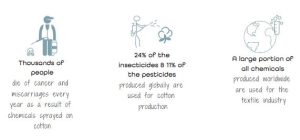
Unveiling the Fashion Industry’s Carbon Footprint: The Impact of Greenhouse Gas Emissions
Choose brands that prioritize sustainability and are transparent about their carbon footprint and emissions. Additionally, consider buying second-hand clothes or renting clothes instead of purchasing new ones to reduce the demand for new clothing production. Lastly, try to reduce your overall energy consumption by washing clothes in cold water and hanging clothes to dry instead of using a dryer.
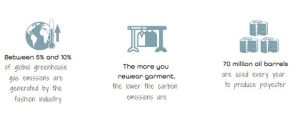
Unveiling the Environmental Impact of the Fashion Industry
The use of synthetic and chemically treated fibers in the fashion industry can also lead to soil degradation. The production of synthetic fibers involves the extraction of crude oil and the release of greenhouse gases, which contribute to global warming and climate change. Chemical fertilizers and pesticides are used in cotton farming, which not only pollute soil but also groundwater and rivers. The large quantities of water used in cotton farming can also lead to soil salinization, which can render it infertile for future crop production.
Moreover, overgrazing of pastures by animals raised for their wool, such as cashmere goats and sheep, can also cause soil degradation. Overgrazing can lead to soil erosion and the depletion of soil nutrients, which can affect the growth of future crops and the health of the ecosystem. Deforestation caused by wood-based fibers like rayon can also contribute to soil degradation as it destroys the natural habitat of many plant and animal species, leading to an imbalance in the ecosystem.
To prevent further soil degradation caused by the fashion industry, it is important to choose fibers that are friendly to the soil, such as organic cotton or linen, which are grown without the use of harmful chemicals. It is also important to support sustainable and eco-friendly fashion brands that prioritize the use of natural, biodegradable fibers and sustainable farming practices. Additionally, we can also reduce our clothing consumption, choose high-quality garments, and donate or recycle old clothes to reduce the demand for new clothes and the impact on soil and the environment.
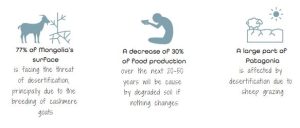
The Dark Side of Rayon: Rainforest Destruction Caused by the Fashion Industry”
Rayon is a popular fabric used in many clothing items due to its low cost, softness, and versatility. However, what most consumers don’t realize is that the production of rayon is responsible for massive deforestation of endangered and ancient forests. In countries such as Indonesia, rainforests are being cut down and replaced with plantations of trees used to make wood-based fabrics like rayon, viscose, and modal. This loss of forests is threatening the ecosystem and indigenous communities who rely on them for their livelihoods. To make more sustainable choices, consumers can choose Lyocell/Tencel® as an alternative to rayon, modal, or viscose. These fabrics are made from sustainably harvested wood pulp and produced using a closed-loop process that minimizes environmental impact. By making more conscious choices, we can help protect the rainforests and the communities that depend on them.

Inhumane working conditions in the fashion industry
The issue of working conditions in the fashion industry is not a new one. It has been widely reported for decades that many of the workers who produce our clothes, especially in developing countries, work long hours for low pay in unsafe and inhumane conditions. These workers often lack access to basic human rights, including the freedom to form unions and bargain collectively. Many work in cramped, poorly ventilated factories with little access to clean water or sanitation facilities.
While some company owners argue that these workers are better off with a job than without one, this argument ignores the fact that they are often working in conditions that violate their basic human dignity. Many workers are forced to work overtime without pay, and many are exposed to hazardous chemicals and other health hazards. The situation is so dire that the European Parliament has referred to it as “slave labor.”
The root of the problem is that many fashion brands are focused solely on maximizing profits, and they are willing to cut corners on labor costs to do so. Companies frequently move production sites to countries with weaker labor laws and lower wages, making it difficult for workers to organize and demand better treatment. To address this issue, consumers must demand that brands prioritize workers’ rights and working conditions in their supply chains. Only then can we hope to create a fashion industry that is fair and just for all.
Wages in the fashion industry
It is estimated that there are around 60 million garment workers worldwide. And yet, according to the Clean Clothes Campaign, only 15% of these workers earn a living wage. This means that the vast majority of workers in the fashion industry live in poverty, unable to afford basic necessities for themselves and their families.
The issue of low wages in the fashion industry is not just a matter of fairness, it is also a matter of safety. Workers who are not paid enough to live on are more likely to work long hours in dangerous conditions just to make ends meet. This is why many of the worst accidents in the garment industry, such as the Rana Plaza collapse in Bangladesh in 2013, have occurred in factories where workers were paid extremely low wages.
Ultimately, it is up to consumers to demand that brands pay their workers a living wage. This can be done by supporting companies that have committed to paying fair wages and by pressuring those that have not to change their practices. By doing so, we can help ensure that the clothes we wear are not made at the expense of workers’ dignity and safety.
The need for fair working hours in the fashion industry
The long and demanding working hours in the fashion industry are a grave concern. Garment workers are subjected to inhumane working conditions that stretch beyond the bounds of human capacity. Many of them work for more than 14 hours a day, sometimes without even a single day off. The pressure to meet production targets and deadlines often results in workers being forced to work long hours. In some cases, they are not even given the choice to decline overtime work, and when they do, their job security is threatened. The lack of fair wages and limited worker protections means that workers are left to face exploitative working conditions with no hope of a better life. It’s time for the fashion industry to take responsibility and ensure that garment workers are treated with dignity and respect by providing decent working hours and fair wages.
The need for safer working conditions in the fashion industry
The working conditions of garment workers are often unsafe, posing significant threats to their health and well-being. The tragic incident at Rana Plaza in 2013 exposed the world to the harsh realities of the fashion industry, and it is high time that we start addressing the issue. Workers are forced to work in hazardous conditions, with no access to ventilation, protective gear, or emergency exits. This not only puts their lives at risk but also affects their mental health and overall quality of life. It’s time for fashion brands to prioritize the safety of their workers and ensure that they have access to safer working conditions.
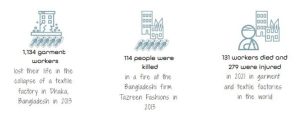
Addressing the Issue of Child Labour in the Fashion Industry
The use of child labour in the fashion industry is a disturbing reality that affects millions of children worldwide. Often, these children are employed in hazardous and exploitative conditions, deprived of their basic rights, and forced to work long hours for meager wages. The Sumangali scheme in South India is just one example of this reprehensible practice, where young girls are subjected to grueling work in textile factories under inhumane conditions. The fashion industry must take responsibility for eliminating child labour and work towards creating a more ethical and sustainable supply chain.
Fighting Forced Labour in the Fashion Industry
Forced labour is an issue that affects many industries, including fashion. The case of Uzbekistan is just one example of how governments can use their power to exploit their own citizens for economic gain. However, this is not the only case of forced labour in the fashion industry. Many workers throughout the supply chain are also subjected to exploitative and abusive practices. It is up to companies and consumers to demand that human rights are respected throughout the production process and to take action to prevent forced labour in the fashion industry.
Challenges of Unionization in the Fashion Industry
Despite international laws protecting the right to form unions, garment workers in the fashion industry often face severe challenges in exercising this right. In many countries, governments or factory owners restrict unionization, making it difficult for workers to band together and fight for their rights. In Bangladesh, for example, only a small percentage of garment factories have registered unions due to legal and regulatory restrictions. Workers who do try to unionize often face retaliation from factory owners, including threats, physical attacks, and termination. These obstacles make it difficult for garment workers to negotiate for better wages, working conditions, and other important benefits.
How Toxic Chemicals in Clothing Affect Our Health and Environment
Every day we wear clothes without realizing that they may contain hazardous chemicals that can be absorbed through our skin. From the fibers to the dyes, many stages of textile production involve the use of toxic substances. Shockingly, even clothes labeled as “100% natural” can contain harmful chemicals. Studies by Greenpeace and other organizations have identified dangerous chemicals used in the production of clothes that are still permitted in many countries. Exposure to these chemicals can lead to serious health problems such as cancer and hormone disruption. It’s crucial that we take steps to protect ourselves, such as washing new clothes before wearing them and choosing garments certified by organizations like OEKO-TEX®, GOTS, or BLUESIGN® that ensure a safer and more sustainable production process.

Ways to Minimize the Environmental Footprint of the Fashion Industry
1.- The Importance of Buying Less for a Sustainable Fashion Industry
Consumerism has become a major contributor to the environmental impact caused by the fashion industry. Despite the growing awareness of sustainability and eco-friendliness, people are still buying clothes excessively. This not only leads to increased production and transportation, but also creates a negative impact on the environment. We must realize that buying new clothes does not necessarily equate to happiness, and that our excessive consumerism needs to be addressed in order to achieve a sustainable fashion industry. By buying less and being mindful of our consumption habits, we can significantly reduce the environmental impact of the fashion industry.
2.- Shopping for sustainability: buy clothes from sustainable brands
One way to reduce the environmental impact of our clothing is to buy clothes from sustainable brands. Many fashion companies are now aware of the social and environmental impact of their production and are taking steps to improve their practices. While the offer of sustainable clothing is still limited, it is growing as more people demand it. Although sustainable clothing may be more expensive than fast fashion, it can still be affordable and can be compared to the prices of brand-name clothing. By choosing to support sustainable brands, we can make a difference in the fashion industry and reduce our impact on the planet.
3.- Choose Quality Over Quantity
Investing in quality clothing may be more expensive initially, but it pays off in the long run. High-quality garments are made to last and withstand wear and tear, unlike fast fashion items that fall apart after a few wears. By choosing quality over quantity, we can reduce the amount of clothing waste we generate and save money in the long term. In addition, supporting brands that prioritize quality encourages them to continue producing high-quality clothing that can last for years. When purchasing new clothes, it’s important to consider not just the price tag, but also the durability and longevity of the item.
4.- Sustainable Clothing: Think Twice Before Throwing Out Your Clothes
When we throw our clothes away, they often end up in landfills where they can take hundreds of years to decompose. Instead of contributing to this growing problem, we can think twice before tossing our clothes in the trash. By repairing or redesigning them, we can extend their life and reduce the need to buy new clothes. Additionally, donating our clothes to friends, family, or charity, or selling them on second-hand apps can give them a second life. Some clothing shops also accept used clothes for recycling or repurposing. Let’s aim to reduce our clothing waste and give our clothes a chance to live on beyond their initial use.
5.- Sustainable Fashion: Buy Second Hand, Swap, & Rent Clothing
To reduce the impact of our fashion choices on the environment, we can explore alternative options to buying new clothing. Second-hand shops and online platforms offer a wide range of affordable clothing options, including high-end brands. Clothes swapping initiatives are also gaining popularity, where participants exchange their clothes to refresh their wardrobes without spending money or harming the planet. Additionally, renting clothes is becoming an increasingly popular trend, providing an eco-friendly solution to wearing outfits that we don’t need or can’t afford to purchase. These options are readily available and accessible, allowing us to make sustainable fashion choices that benefit both the planet and our wallets.
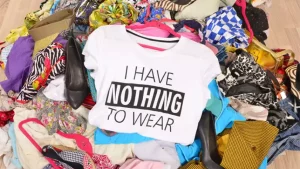
6.- Sustainable laundry practices
When it comes to washing our clothes, there are some easy steps we can take to reduce our environmental impact. First, we can try to wash our clothes less often, especially if they are not visibly dirty. Secondly, we can use a lower temperature setting when washing, as up to 90% of the energy consumed by washing machines goes toward heating the water. Thirdly, we can opt for eco-friendly laundry detergents that are less harmful to the environment. Finally, we can air-dry our clothes instead of using a dryer, which will save energy and prolong the life of our clothes. By adopting these sustainable laundry practices, we can reduce our water and energy consumption, and ultimately, our environmental footprint.
Collaborative Initiatives for Positive Impact
Fashion Revolution: A Movement for Ethical Fashion Production
The Fashion Revolution movement is dedicated to transforming the fashion industry to ensure that clothes are made in a safe, clean, and fair way. Their mission is to create a global collaboration between everyone involved in the value chain of fashion production. One of their major campaigns is the Fashion Revolution Week, which takes place in April and includes the #whomademyclothes campaign. During this week, brands and producers are encouraged to show transparency in their supply chain by responding with the hashtag #imadeyourclothes. This initiative aims to encourage consumers to question the origin and ethics of their clothing, and to raise awareness about the importance of responsible fashion production.
Greenpeace’s Detox Campaign: Eliminating Toxic Chemicals in Fashion
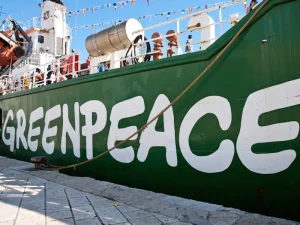
Greenpeace’s Detox Campaign is a pioneering effort aimed at raising awareness about the hazardous chemicals used in the fashion industry. By investigating the suppliers of major clothing brands, as well as testing their products for toxic residues, Greenpeace has been able to expose the direct links between the industry and water pollution.
The campaign has successfully urged nineteen international fashion companies to commit to eliminating toxic chemicals from their supply chains. By doing so, Greenpeace is pushing the fashion industry towards a future that is safe for both the environment and the people who produce our clothes.
Clean Clothes Campaign: Fighting for Fair Labor Practices in the Fashion Industry
The Clean Clothes Campaign is an international alliance that seeks to promote fair labor practices and improve working conditions for garment and sportswear workers across the globe. Through advocacy and activism, the CCC aims to hold companies and governments accountable for ensuring workers’ rights are respected and implemented. The organization raises awareness and mobilizes people to take action, while also providing support to workers and activists who are fighting for their rights. With a focus on concrete cases of labor violations, the CCC works to explore judicial mechanisms and push for legislation that protects workers and holds companies accountable for their actions.
Towards a Safer and More Sustainable Textile Industry with ZDHC
The Zero Discharge of Hazardous Chemicals (ZDHC) Foundation is paving the way towards a safer and more sustainable textile industry. Through their collaborative efforts with 70 leading companies in the textile, leather, and footwear value chain, ZDHC is working towards eliminating the discharge of hazardous chemicals that pose a risk to the environment and human health. By promoting sustainable chemistry and best practices, ZDHC is driving positive change towards a future with zero discharge of hazardous chemicals in the industry.
The True Cost: Unveiling the Hidden Side of the Fashion Industry
The True Cost is a compelling documentary that sheds light on the fashion industry’s impact on our environment and society. It reveals the hidden costs behind the cheap clothing we buy, from the exploitation of garment workers to the environmental damage caused by the production process.
Through interviews with industry insiders, workers, and activists, the film explores the complex web of social and environmental issues tied to the fast fashion industry. It urges viewers to rethink their consumption habits and consider the true cost of the clothes they buy.
The True Cost is a powerful tool for raising awareness about the impact of fashion on our world and inspiring positive change.
Global Organic Textile Standard (GOTS): Ensuring Sustainable and Organic Textiles
The Global Organic Textile Standard (GOTS) is a comprehensive and widely recognized standard for organic fibers. By setting strict ecological and social criteria, GOTS ensures that textiles are produced sustainably, from the harvesting of raw materials to environmentally and socially responsible manufacturing. This ensures that consumers can trust the organic status of textiles, promoting a sustainable and ethical fashion industry. GOTS covers all textiles made from natural fibers, including cotton, linen, and wool, and provides two label-grades for consumers to easily identify organic and partially organic textiles.
Fair Wear Foundation: Improving Workplace Conditions in the Clothing Industry
Fair Wear Foundation is a non-profit organization that collaborates with brands, factories, trade unions, NGOs, and governments to improve workplace conditions in the clothing industry. They believe in working towards multi-faceted solutions to address poor labor conditions, focusing on creating long-term change through collaboration with brands.
With over 80 member companies, FWF has developed a code of labor practices that include fair payment, safe working conditions, and non-discrimination policies. Through their Brand Performance Check, FWF verifies that their member brands are complying with their labor standards, and they also provide guidance and training to factories to help them meet these standards.
FWF’s approach is based on transparency and collaboration, and they work with all stakeholders in the clothing industry to create positive change.
After exploring these various initiatives and campaigns related to sustainable fashion, it is clear that there is a growing movement towards a more conscious and responsible fashion industry. From the Fashion Revolution’s “Who Made My Clothes?” campaign to Greenpeace’s Detox campaign, organizations and individuals are working tirelessly to make the industry more transparent, ethical, and sustainable. The Zero Discharge of Hazardous Chemicals program and the Global Organic Textile Standard provide important guidelines and certifications for the use of safer and more environmentally friendly practices in textile production. The Fair Wear Foundation is helping to improve working conditions and empower workers in the industry.
By learning about these initiatives and supporting the brands that participate in them, consumers can help drive change in the industry. It is clear that the choices we make as consumers can have a significant impact on the industry and the world as a whole. As the demand for sustainable and ethical fashion continues to grow, we can look forward to a future where fashion is not only beautiful and stylish but also responsible and sustainable.
 Love For Upcycling
Love For Upcycling
0 Comments